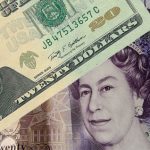The pound advanced to the strongest level in almost three years against the US dollar, on increased bets Bank of England will not be able to hold down borrowing costs, following this weeks revised forward guidance amid strengthening UK economy.
GBP/USD hit a 33-month high at 1.6715 at 08:35 GMT, after which consolidation followed at 1.6708, adding 0.3% for the day. Support was likely to be received at February 13th low, 1.6600, while resistance was to be encountered at May 2nd 2011 high, 1.6739.
In its quarterly inflation report released on February 12, Bank of England revised its forward guidance, replacing the 7% unemployment threshold with a range of economic indicators, including spare capacity.
BoE said the unemployment rate will probably fall below 7% in the first quarter of this year, but at the same time underscored there was “scope to absorb spare capacity further before raising bank rate” from the current record-low 0.5%. BoE estimated an output gap between 1% and 1.5% of UK gross domestic product.
The central bank raised its forecast for the UK economic growth in 2014 to 3.4% from 2.8% projected in November. It also predicted that the UK economic growth in Q4 will be revised upwards to 0.9% from the 0.7% initially estimated by the statistics office, and projected a similar expansion in the three months through March.
However, investors remained doubtful that BoE Governor Mark Carney will be able to hold down borrowing costs, as the UK recovery continues to gain traction.
UK construction output probably increased 2% in November from a month ago, when it contracted 4%, according to a Bloomberg News survey. Higher-than-expected reading will certainly heighten the appeal of the pound.
The sterling has appreciated 12% in 2013, marking the best performance among the 10 developed-nation currencies, which are tracked by Bloomberg Correlation-Weighted Indexes. At the same time, the US dollar has risen 3%.
Meanwhile, greenbacks demand continued to be pressured after two downbeat US reports added to signs of uneven economic recovery.
The US Department of Labor reported yesterday that the number of people who filed for unemployment benefits for the first time unexpectedly increased to 339 000 in the week ended February 8, while analysts projected the number of initial jobless claims will decline to 330 000 from 331 000 in the previous week.
A separate report by the US Census Bureau, revealed the nation’s retail sales dropped by 0.4% in January, the most since June 2012 and after a downward revised 0.1% decrease in the previous month. Analysts had expected the retail sales index to remain flat in January. Retail sales are closely watched, because they provide crucial information regarding the tendency in consumer spending in the United States, which, on the other hand, accounts for about 70% of nation’s Gross Domestic Product.
Janet Yellen’s second day of testimony to the Senate Banking Committee, was postponed due to a snowstorm that tracks across the US East Coast. The hearing was scheduled to be held at 15:30 GMT yesterday.
Federal Reserve President for St. Louis James Bullard said on Wednesday that policy makers will be cautious, when deciding to change the pace of their cuts to to bond buying, because this can have potentially significant impact on markets.
Janet Yellen, in her first testimony to Congress as head of the Fed, said on February 11, the central bank will “likely reduce the pace of asset purchases in further measured steps at future meetings”, if the labor market continues to recover and inflation rises.
Yellen underscored “continuity” in the Federal reserve monetary policy, emphasizing that she strongly approves the approach of her predecessor, Ben Bernanke.
The Fed Chairman also reiterated that the pace of cutting back Fed stimulus was not on a “preset course”.
Fed policymakers are to hold their next meeting on March 18th-19th and will probably continue to pare stimulus by $10 billion at each policy meeting before exiting the program in December, according to a Bloomberg News survey of 41 economists, conducted on January 10th.
Elsewhere, AUD/USD touched a daily high at 0.9024 at 1:30 GMT, after which consolidation followed at 0.8990, rising 0.12% for the day and set for a 0.32% weekly advance. Support was likely to be received at February 13th low, 0.8928, while resistance was to be met at February 13th high, 0.9032.





